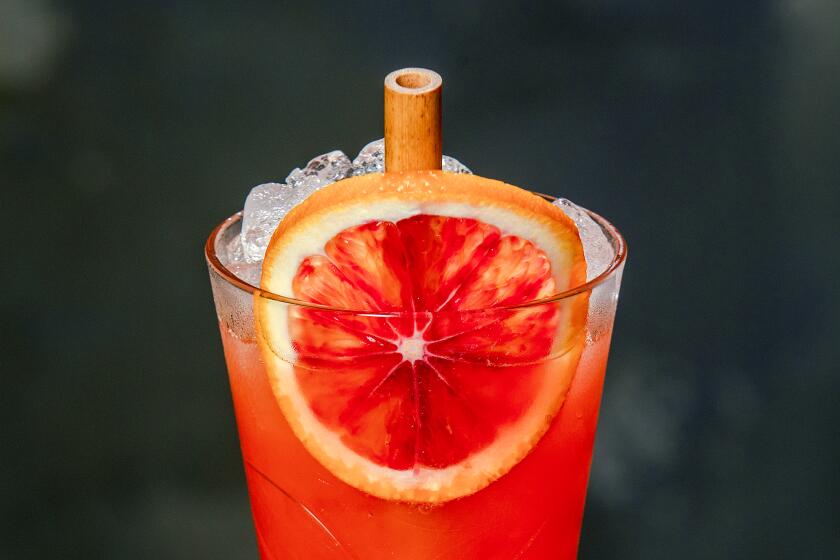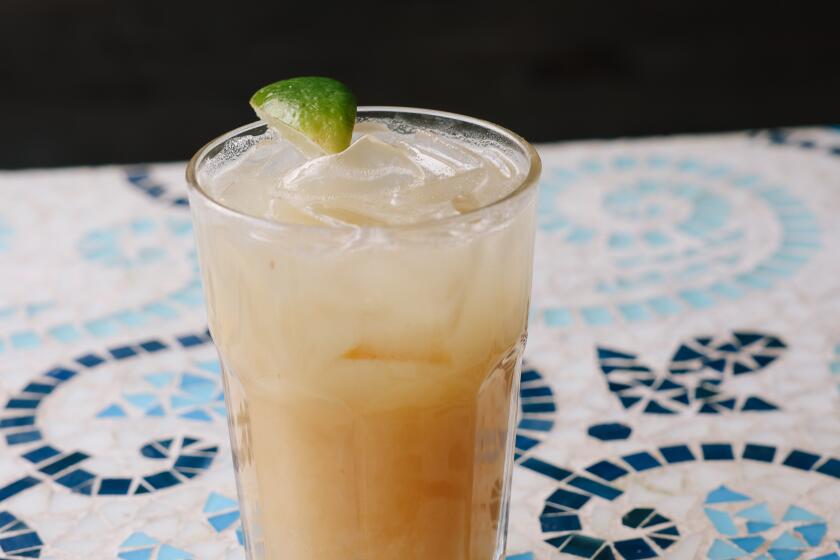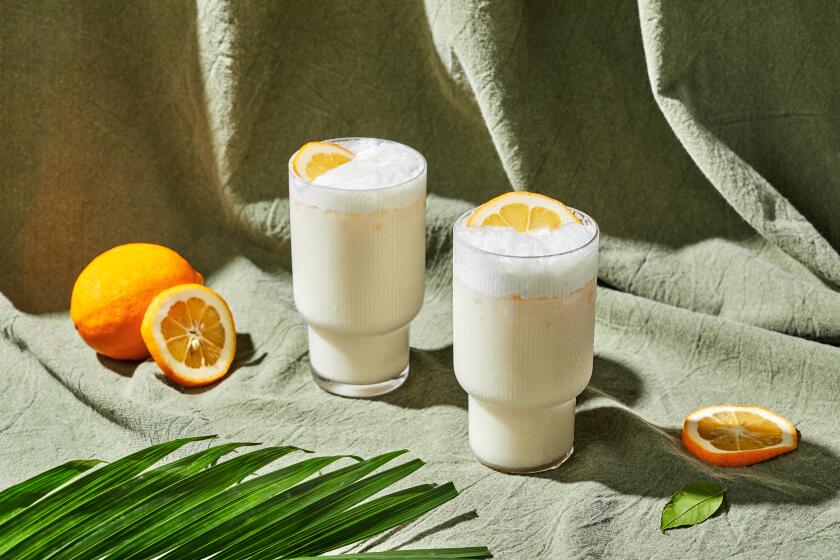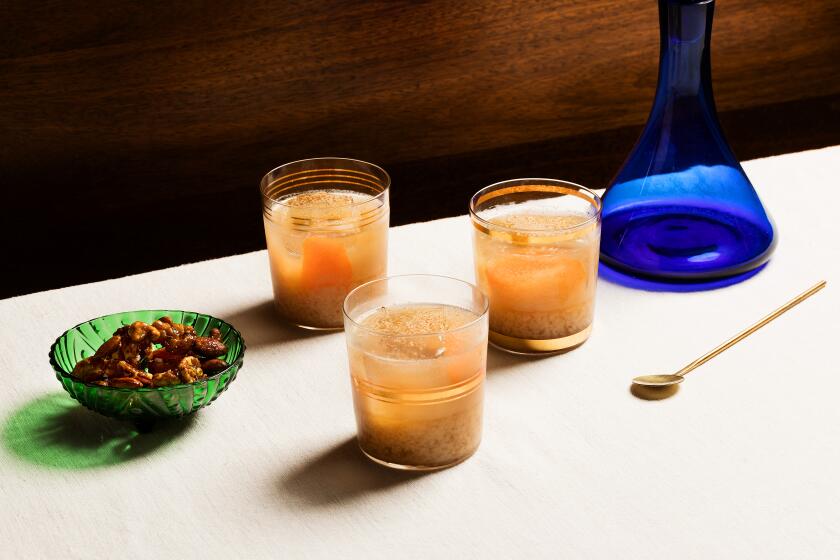Limoncello
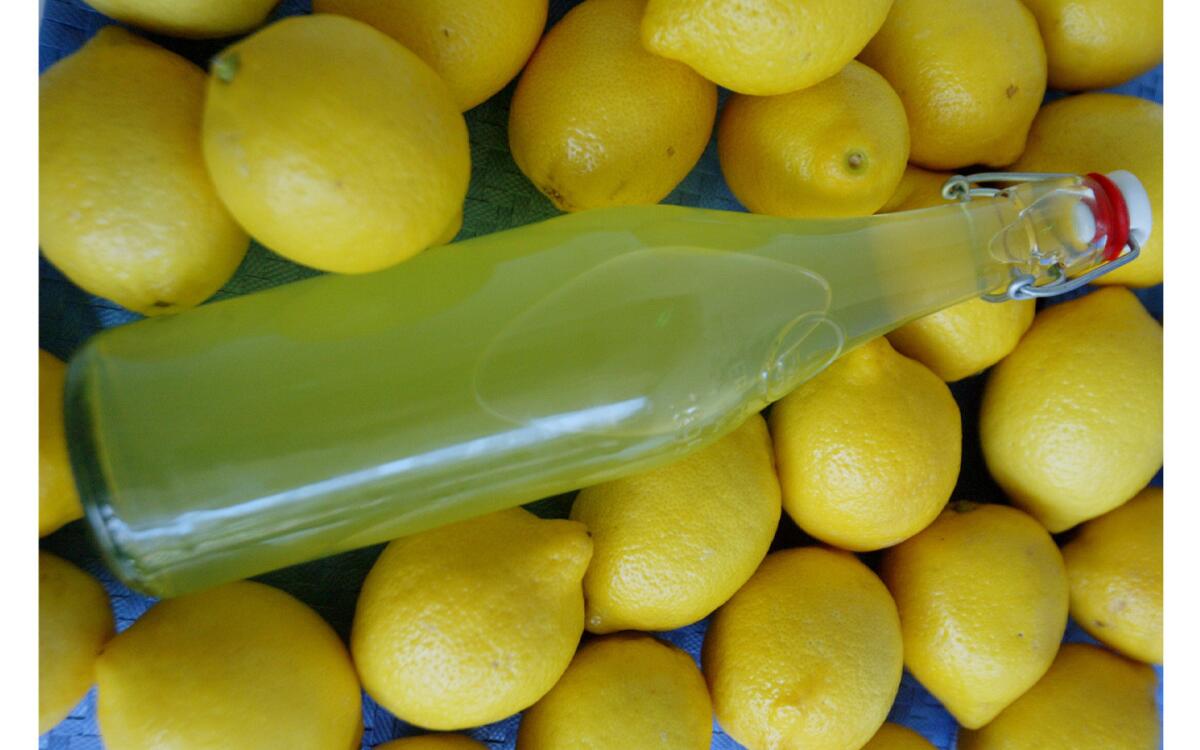
On a wiltingly hot late summer evening, when all the plants are fainting and there’s not a breath of wind, you pour a tiny glass of limoncello straight from the freezer. It’s colder than ice, and it explodes in your mouth with all the freshness and optimism of lemon. Each sip seems to say, “Poor kid! Poor kid! What a scorcher that was! But everything’s all right now -- your old friend night is on the way.”
They know a lot about hot summer evenings in Sicily, where limoncello was invented about 100 years ago. It might just be the most sympathetic after-dinner drink there is, as bracing as a gin and tonic but more cheerful and fragrant. Limoncello’s fans have found a lot of other uses for it too: spiking lemonade, flavoring cocktails and splashing onto ice cream, poundcake or fresh fruit.
Admittedly, the very best limoncello is made in Sicily. But you can make excellent limoncello at home.
Why do it? Because although there’s been a proliferation of imported brands, the quality is really all over the map, and many commercial limoncellos are too sweet. When you make your own, you can use the best citrus available and control the sugar to your taste. And it’s nice to be able to offer your guests a liqueur you’ve made yourself.
On top of that, you’ve saved money. Imported limoncellos run about $25 a bottle, but for around $35 you can make the equivalent of nearly three bottles, just for the trouble of zesting a dozen lemons, boiling some sugar and water for a couple of minutes and waiting three weeks while it all infuses.
In Sicily, the Sorrento lemon is preferred for making limoncello. Also known as Femminello St. Teresa, the Sorrento has a zest particularly high in lemon oils. We don’t have Femminello lemons in California -- yet. But in February, California Citrus Specialties in Exeter expects to harvest 1,000 to 2,000 pounds of Femminello St. Teresas.
Don’t get your hopes up just now, because Lance Walheim of California Citrus Specialties says most of his crop will go to Bay Area restaurants. But someday you may be able to come home from the market with a sack of Femminellos.
In the meantime, we have ordinary supermarket Eureka lemons, which are not bad at all. In fact, we tasted our homemade limoncello -- made with Eurekas -- against a well-known Sicilian brand, and frankly, we preferred its bright, lemony flavor (although the Sicilian had a deeper yellow color). Choose lemons with thick, waxy skins, which seem to have the best lemon oil content.
You can also make similar liqueurs using other citrus fruits. “Lime-cello” is wonderfully flavorful and would be terrific in cocktails and cooking. The orange version is more appealing than triple sec. In winter, there are still more citrus fruits to choose from, such as mandarins, blood oranges, Meyer lemons and citrons, which would make good liqueurs, particularly the fabulously aromatic Buddha’s hand citron.
If you use grapefruit or tangelo, you’ll get a different sort of liqueur -- a bitter one along the lines of Campari. Grapefruit, tangelo and their common ancestor, pummelo, contain substantial amounts of nootkatone, the chemical that gives grapefruit juice its refreshing bitterness along with its characteristic flavor.
Peel, not pith
The traditional way of making limoncello is to slice off the topmost layer of lemon peel, avoiding the bitter white pith as much as possible. If there is any pith on a slice, scrape it off with a knife or spoon. An extremely sharp vegetable peeler works best.
Or you can use a fine Microplane grater. The Microplane can remove an exceedingly thin layer from the peel, and because the zest comes off in strings rather than strips, more surface is exposed and the peel doesn’t have to steep in vodka quite as long. (If you do use a fine grater such as a Microplane, avoid the temptation to shave off every last bit of colored peel, because you’re likely to end up taking some pith along with it. In other words, it’s best to give up on the colored parts of the peel that are in any “valleys” in the surface of the lemon.)
Once you have your lemon zest or peel, steep it for a couple of weeks in vodka. You can tell that the flavoring elements have been thoroughly leached out when the peels have lost their color. Add sugar syrup (more or less, depending on how sweet you like it) and more alcohol to make a liqueur. The flavor will improve over the next week or two.
Because the aromatic elements are leached from the lemon peel by alcohol, you might think the higher the proof of the vodka, the better, and the very best thing might be 195 proof (Everclear). Up to a point, that seems to be true, but I notice that European recipes don’t call for pure alcohol. They generally specify equal quantities of pure alcohol and water: 100-proof vodka, in effect.
Using 100-proof Smirnoff 57, the usual recipe will give you a limoncello with the same alcoholic content as commercial varieties: 60 proof. If you use the more common 80-proof vodka, on the other hand, you’ll have to steep the peels longer to get as much flavor out of them, and the recipe will give you a 50-proof limoncello.
Cold, cold, cold
Limoncello is usually kept in the freezer, where the temperature is commonly 5 degrees. In the case of 50-proof limoncello, you may see some of the water freeze and form ice crystals on the walls of the bottle at that temperature; the part that remains liquid will be closer to 60 proof. There is little danger of the bottle exploding, however, if you don’t fill it to the brim and if you seal it with a screw top. A bottle of 60-proof limoncello will not show any freezing of this sort unless the temperature falls below 0 Fahrenheit.
Either way, you’ve made your own bottle of that friendly, sunny-colored liqueur -- and you even have a couple of extras for friends.
Remove the yellow part of the lemon peel with a sharp peeler or fine grater, carefully avoiding the bitter white pith. If any pith remains on the back of a strip of peel, scrape it off.
Put the yellow peels in a jar or bottle, add 1 bottle vodka and seal tightly. Leave the bottle to steep until the peels lose their color, at least 2 weeks.
Put the water and sugar in a saucepan and boil until it turns clear. Let the syrup cool.
Strain the vodka from the peels and mix it with the remaining bottle of vodka and the syrup. Put the liqueur in bottles, seal tightly and let the components marry for at least 1 week before using. For drinking straight, store the limoncello in the freezer.
Get our Cooking newsletter.
Your roundup of inspiring recipes and kitchen tricks.
You may occasionally receive promotional content from the Los Angeles Times.











